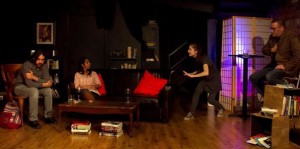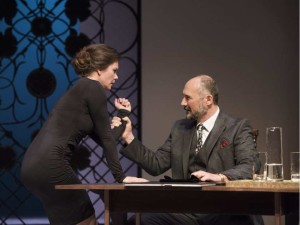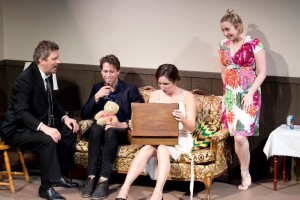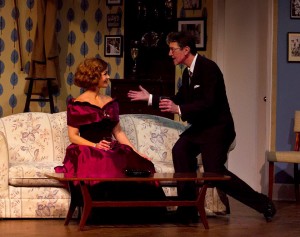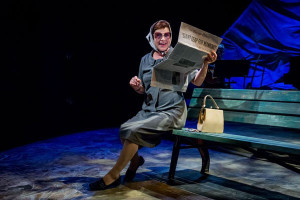Imaginary Lines: One joke does not make a compelling script or production

Imaginary Lines
By Reggie Oliver
Linden House Theatre Company
Directed by Robin Bowditch
There are the words you say, the words you wish you had said and the enhanced version of events resulting from the imagined conversation.
This is the theme of Reggie Oliver’s 1987 comedy Imaginary Lines. At times, the format, combined with the breaking down of the fourth wall as characters address the audience directly, works well. More of the time, the device is tiresome and slows or confuses the action. But, the miscommunication and replays of conversations are apparently needed to pad the action in a script with a thin and somewhat unappealing storyline.
The central character is Wanda, a book illustrator, who tries to make her friends fit into her imagined scenarios. Involved with her and each other are: Howard, a shy bookstore owner looking for a girlfriend; Michael, a randy MP; Carol, an outspoken, unemployed teacher; and Olga, a gossip and writer of children’s books.
The Linden House Theatre Company production, directed by Robin Bowditch, delivers a group of characterizations that are true to type, but, mainly because of the one-note, single-joke nature of Oliver’s script, tend to have only one defining characteristic. Only Venetia Lawless makes her characterization as Carol rounded and interesting because she tempers anger with warmth and hope for a better outcome. …
